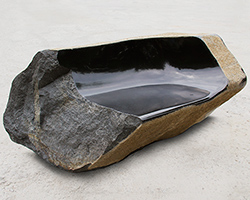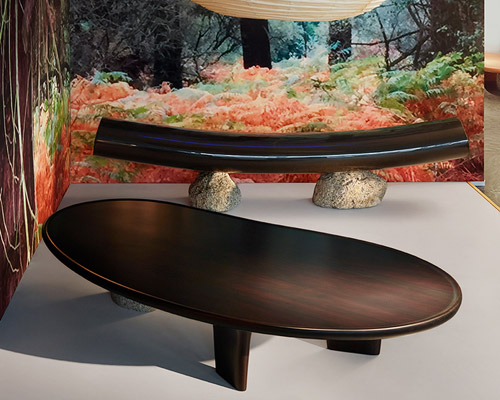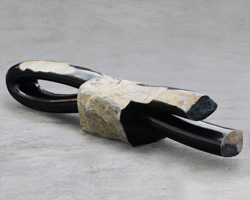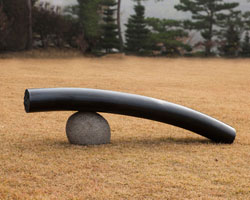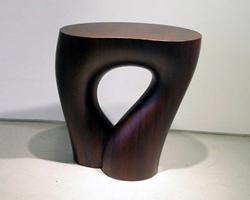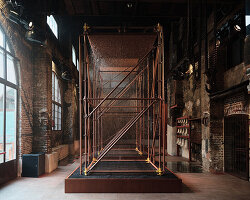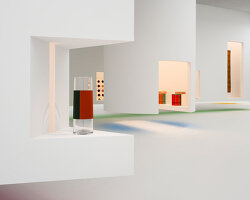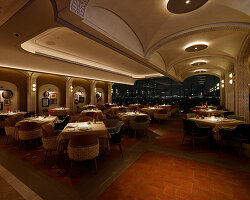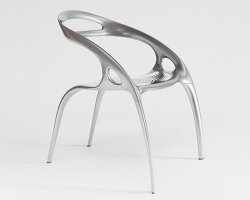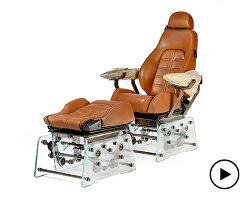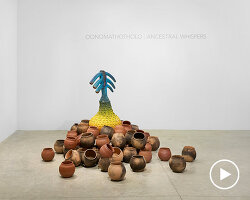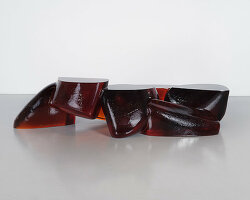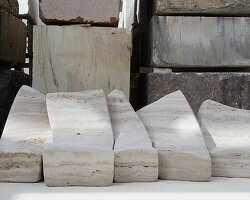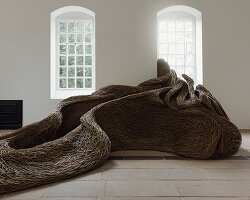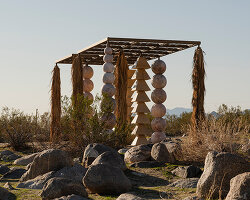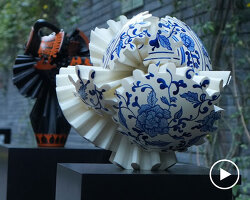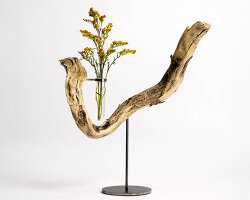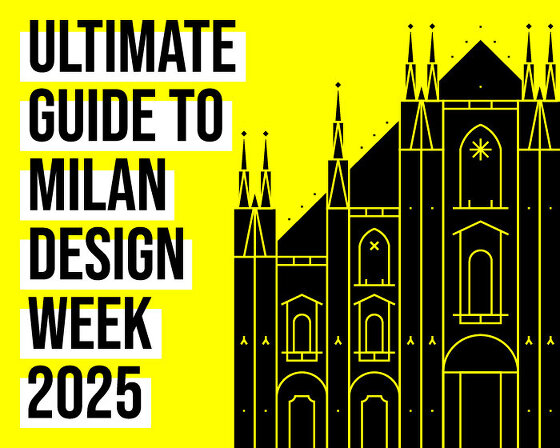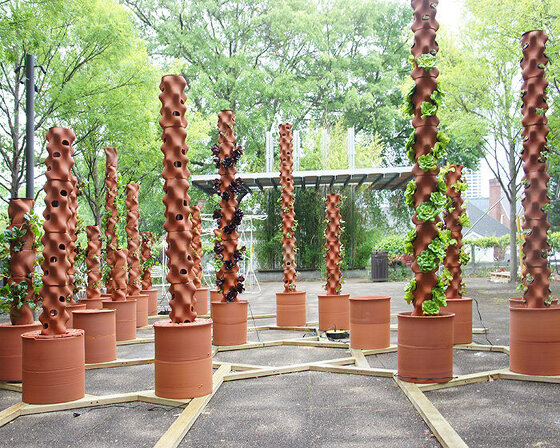‘voice of silence’ draws from korean tradition
In his latest solo exhibition, Voice of Silence, at Friedman Benda, artist and master craftsman Byung Hoon Choi invites viewers to experience a space for inward reflection. Drawing from Zen Buddhism, Taoist philosophy, and Korea’s traditions of humility and restraint, Choi’s new body of sculptural works opens a dialogue between stillness and vitality, presence and memory.
‘Nature is said to be silent,’ the artist reflects during an interview with designboom, ‘but within that nature lies an immense vitality.’ This tension between the quiet and the alive animates every edge and surface in the exhibition, where monumental basalt works and quietly commanding wooden cabinets seem to hum. Voice of Silence is on view from March 27th — May 23rd, 2025 at Friedman Benda’s New York gallery.
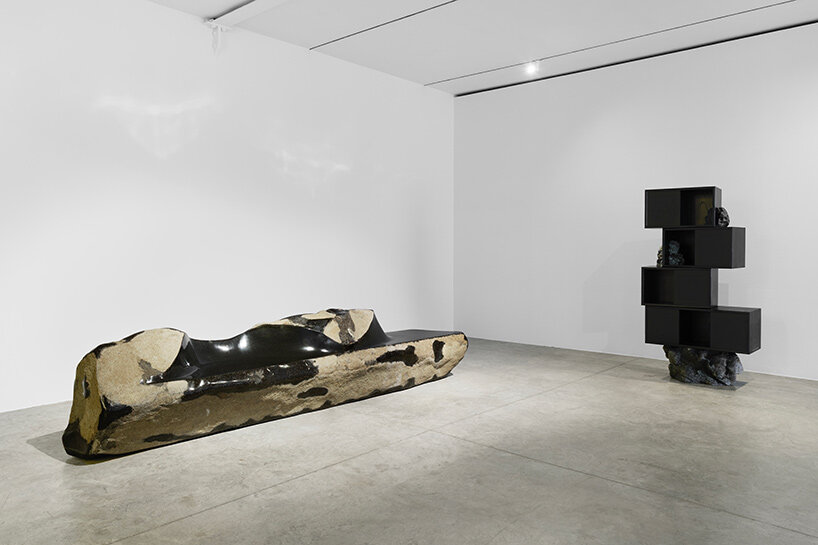
installation view courtesy Friedman Benda and Byung Hoon Choi | photo by Izzy Leung, video © designboom
expressing the tactility of raw materials
As Byung Hoon Choi illustrates at Friedman Benda, his materials speak of time. Basalt, formed in fire millions of years ago, becomes the surface through which Choi carves what he calls ‘a lingering afterimage of the origin.’ In pairing this primal material with wood — often shaped into low, contemplative forms recalling Joseon-era scholar furniture — he grounds his work in the Korean design tradition while pressing it forward into a new, sculptural language.
‘I try to express the surface of the natural stone as it was found,’ the artist explains, drawing a distinction from more decorative Chinese and Japanese traditions. The result is a cultural excavation made visible: Korean history, unembellished and elemental, revealed through the tactility of raw form.
Materials are more than just matter. They carry energy, intention, and philosophy. He approaches each stone and piece of wood not with a preordained design, as a humble listener. ‘If a shape emerges from the stone, I follow that shape to create something,’ he says. This responsiveness is echoed in his respect for softness, both physical and emotional: the diffused lighting of the gallery space, the curtain-like installations that suggest a mysterious mist. The work is less about making a statement and more about clearing space for thought and for stillness.
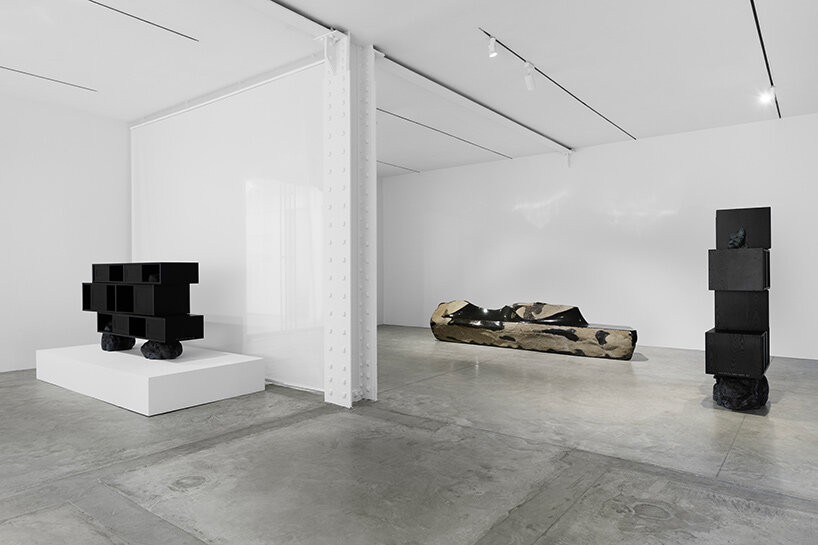
installation view courtesy Friedman Benda and Byung Hoon Choi | photo by Izzy Leung
Byung Hoon Choi’s Philosophy Carved in Stone
Even after decades of teaching and exhibiting, Byung Hoon Choi continues to seek surprise, inspiration, and renewal. His advice to young artists is telling: ‘Set certain limits for yourself, and then flip those limits.’ In many ways, Voice of Silence is an embodiment of that ethos. It resists easy categorization — between art and design, sculpture and furniture — and instead distills an essence, one that is essentially Korean and quietly radical.
‘Everything is possible,’ Choi says. And within that spaciousness, carved from stone and shadow, silence takes shape and is given a voice. Read on to discover designboom’s full interview with the artist during the opening of Voice of Silence at Friedman Benda.
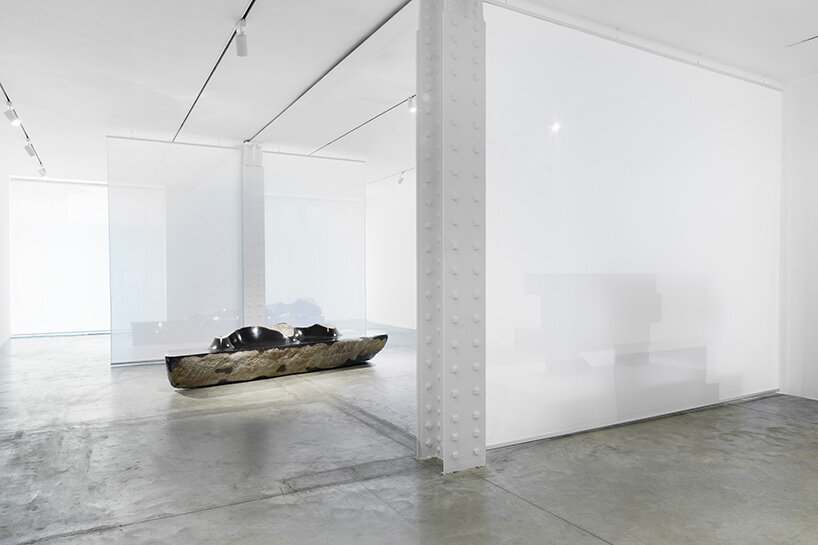
installation view courtesy Friedman Benda and Byung Hoon Choi | photo by Izzy Leung
designboom (DB): How do you interpret the phrase ‘Voice of Silence?’
Byung Hoon Choi (BHC): Nature is said to be silent, but within that nature lies an immense vitality. The materials I use are natural, and through them, I try to draw out a deep sense of vitality. That reflects an Eastern philosophy — one that doesn’t express itself outwardly in a flashy way, but rather holds something internal and profound.
Rather than bragging too much or trying to show off excessively, I prefer to hold my values within and seek a sense of depth — that’s the tendency of my work. So, this kind of expression doesn’t come from a selfish place but rather from something natural. It’s not about forcing or exaggerating things — just letting them be as they are. I’m not trying to artificially show off or flaunt anything.
DB: What is your relationship with Zen Buddhism and Taoism?
BHC: Ever since I was young, my parents and my grandparents were all Buddhists. So I went to temples many times. I think that’s something that’s kind of ingrained in the basic mentality of Korean people, historically speaking.
During the Joseon Dynasty [the last dynasty of Korea, reigning from 1392 to 1910], which was an era of Confucianism, scholars had the virtue of humility, of not showing off their knowledge of science or other fields. The virtue of modesty. A humble attitude. That was the posture, the mindset, that intellectuals of the Joseon era held toward nature and the world around them.
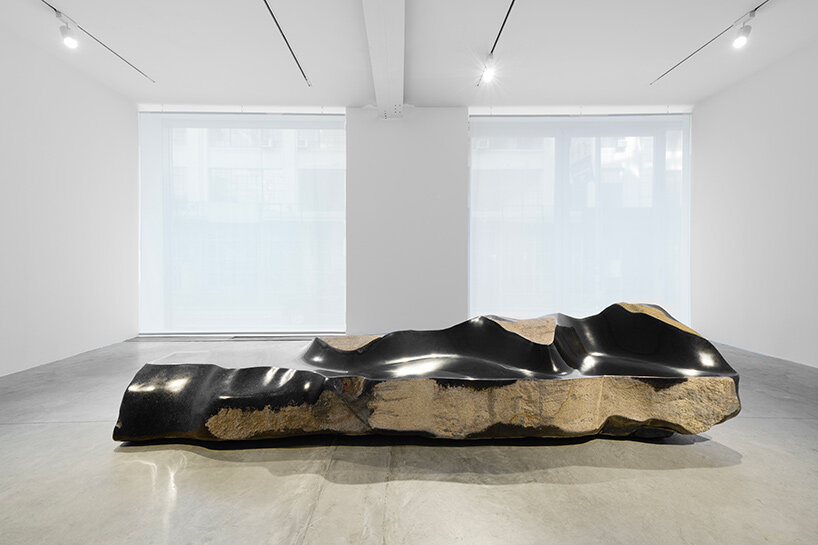
installation view courtesy Friedman Benda and Byung Hoon Choi | photo by Izzy Leung
DB: You’ve described stone as a ‘lingering afterimage of the origin.’ Could you elaborate on what this concept means to you?
BHC: For this stone to have formed, it took an unimaginable span of time, billions of years. It’s like a remnant from the very beginning of time, from the era of the Big Bang, when humanity was just being born. It’s something that was formed over billions of years, and by giving it a new touch today, I’m creating new value. It’s like reviving the traces of the beginning.
DB: Can you describe your use of basalt and wood together?
BHC: For me, whether it’s stone or wood, I don’t really distinguish by material type. I follow the texture of the stone or the particular properties of the wood — what you might call its materiality. When I look at basalt, I notice that it’s a single solid piece. So when I use that single piece, if a shape emerges from the stone, I follow that shape to create something.

installation view courtesy Friedman Benda and Byung Hoon Choi | photo by Izzy Leung
DB: How do your cross-cultural encounters shape your practice?
BHC: When I was young, I experienced a lot of ancient areas from the Mayan and Incan cultures, as well as Roman and Greek ruins. When you go to the ruins, the stones from the collapsed structures are scattered all over the place. Maybe there are even some inscriptions on them. In Korea too, the old temples — the wooden buildings are now all gone, destroyed by fire, and only those stone remnants are left behind.
I try to find my own identity within the Korean identity — an identity that is different from China and Japan, and unique to Korea. I’ve seen many similarities between these cultures, but after traveling across the world, I wanted to focus on Korean Heritage through my work.
I want to distinguish the cultural elements between Korean culture and Chinese and Japanese cultures. They may seem similar, but there are differences. I want to discover the Korean essence and incorporate it into my work.
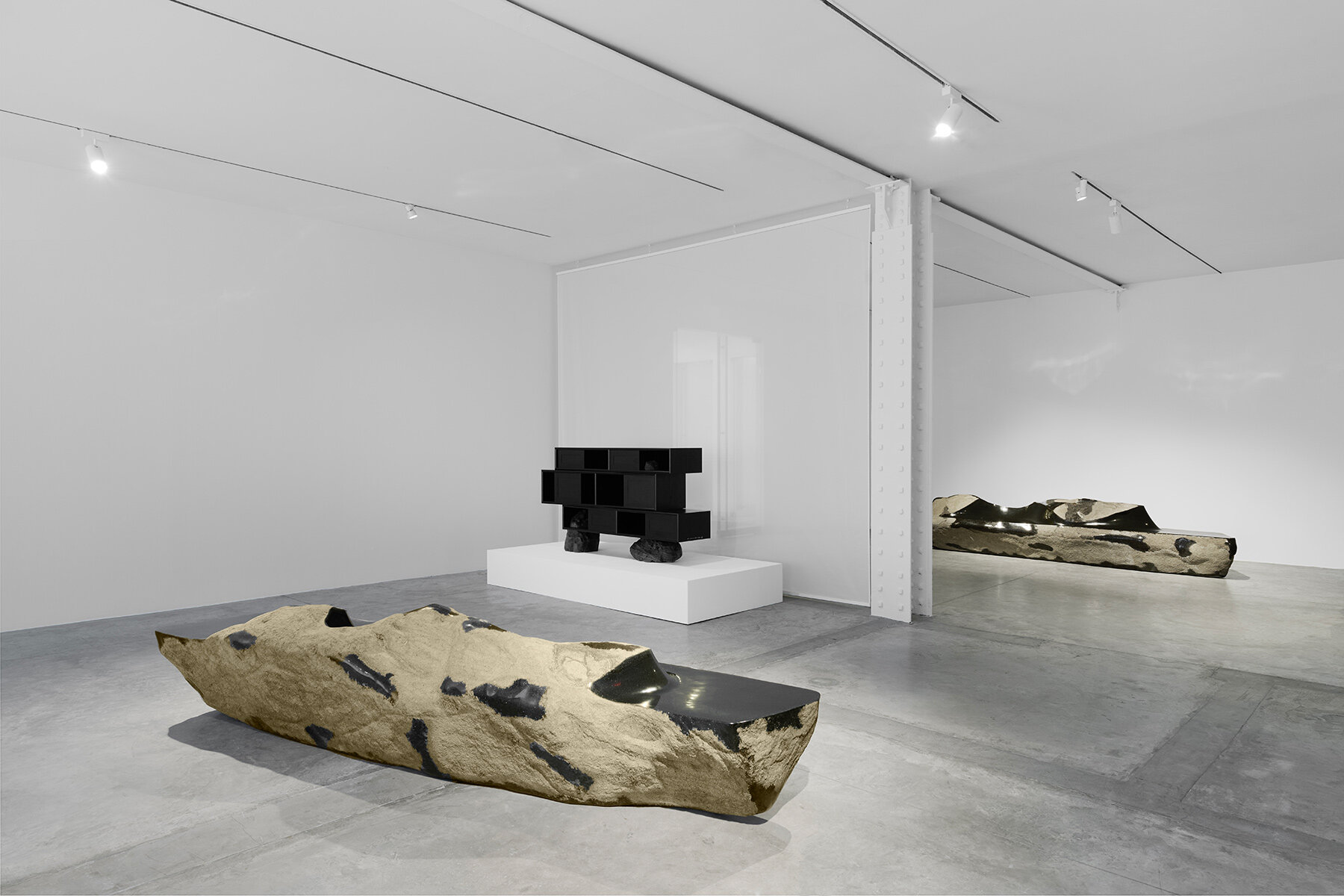
installation view courtesy Friedman Benda and Byung Hoon Choi | photo by Izzy Leung
DB: How can viewers read what is essentially Korean?
BHC: Korean design is not overly flashy, but embraces nature just as it is, untouched. So, what we’re doing here, this is like experiencing tangerines—something very familiar in Korean knowledge — but here, we feel the landscape, the nature, even indoors. This is the Korean sensibility. Instead of decorating it in a flashy way, we remember the deep flavor of nature in a place like this. This is what makes it Korean.
During the time of the Joseon Dynasty, Chinese and Japanese design was very decorative. That is the key difference. Koreans collected stones, which they didn’t sculpt very much. They left the stones as they were found in nature. In my work, I try to express the surface of the natural stone as it was found.
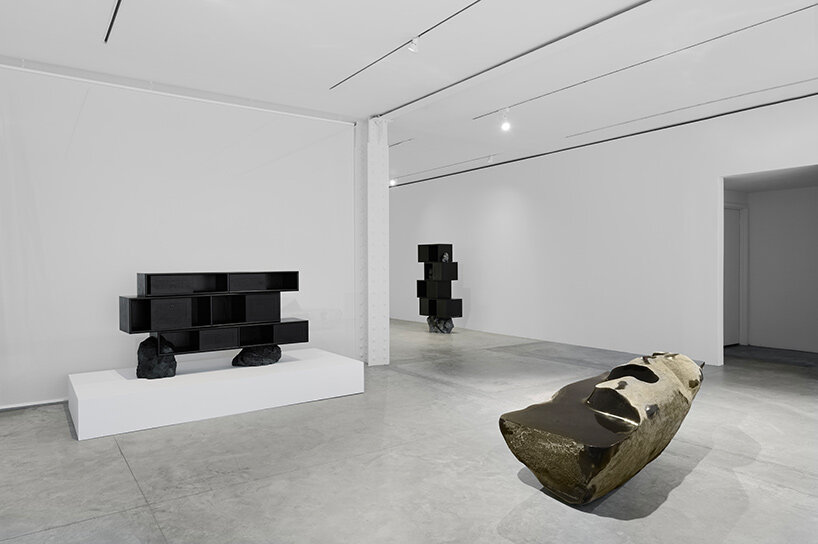
installation view courtesy Friedman Benda and Byung Hoon Choi | photo by Izzy Leung
DB: After a lifetime of teaching and practicing and what continues to challenge you or surprise you about your work or the materials?
BHC: I’m constantly making an effort to be surprised, to feel some kind of stimulation. For example, I keep traveling, or I watch artist films. Not long ago, I saw one like that, a film about the painter Anselm Kiefer. By watching things like that, I continue striving to discover something new.
Even after retirement, I’ve always kept that in mind — making an effort like that to maintain the vitality of my work. I think about it often and put in a lot of effort.
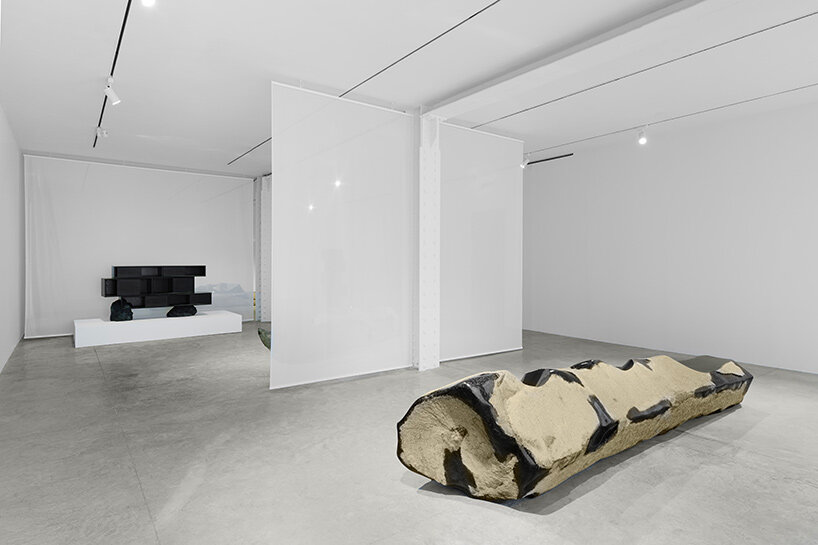
installation view courtesy Friedman Benda and Byung Hoon Choi | photo by Izzy Leung
DB: What is one piece of advice you would give to an emerging designer?
BHC: It’s not about doing something to yourself within fixed boundaries, but rather about intentionally setting certain limits for yourself—and then flipping those limits, challenging the boundaries of your own thinking.
Everything is possible — that’s how I see it. In art, whether it’s fine art, design, or craft, there’s no need to draw strict boundaries between these fields. Those divisions aren’t necessary. So, follow your heart and seek out a new world. I’m still on the journey of finding my voice.
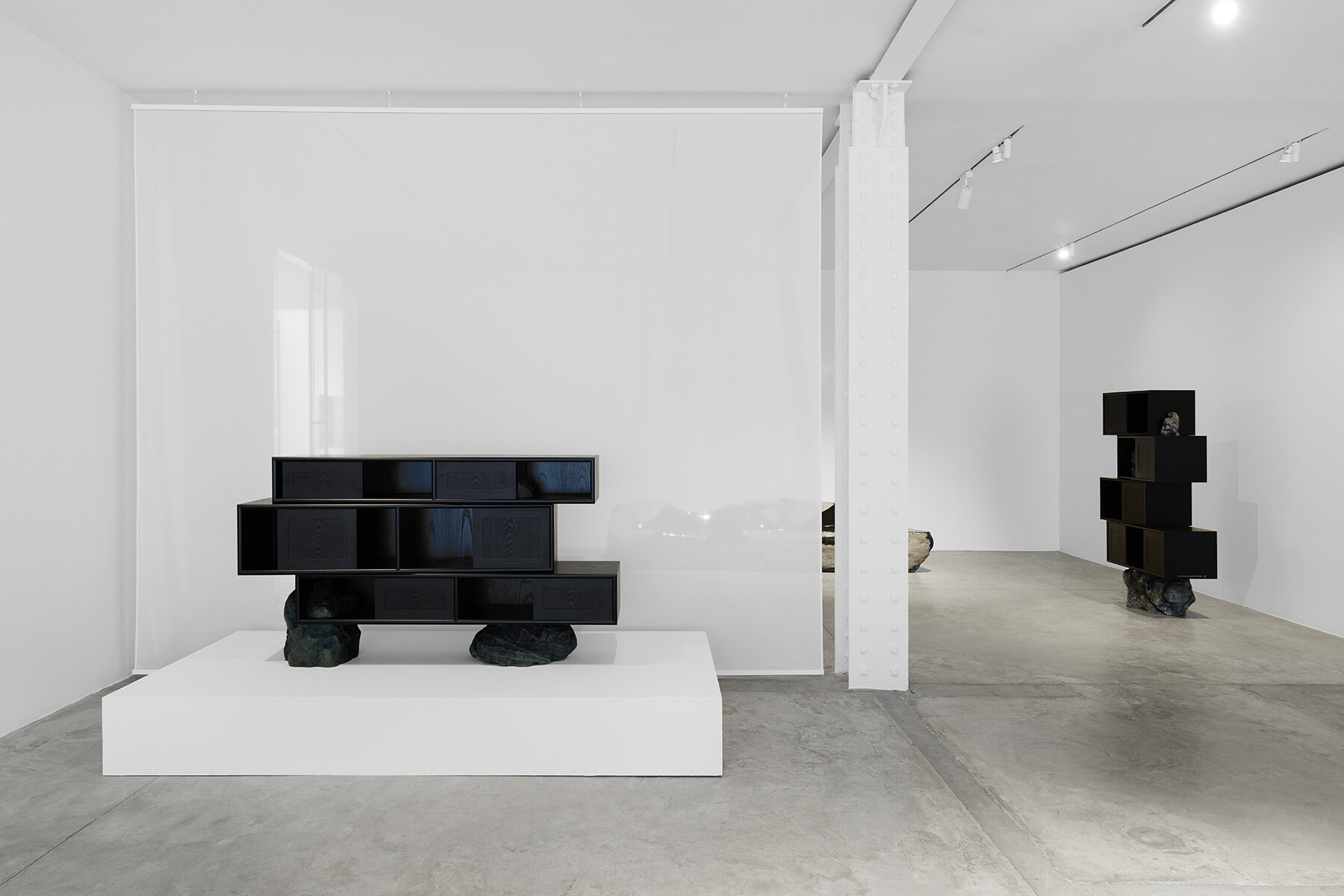
installation view courtesy Friedman Benda and Byung Hoon Choi | photo by Izzy Leung
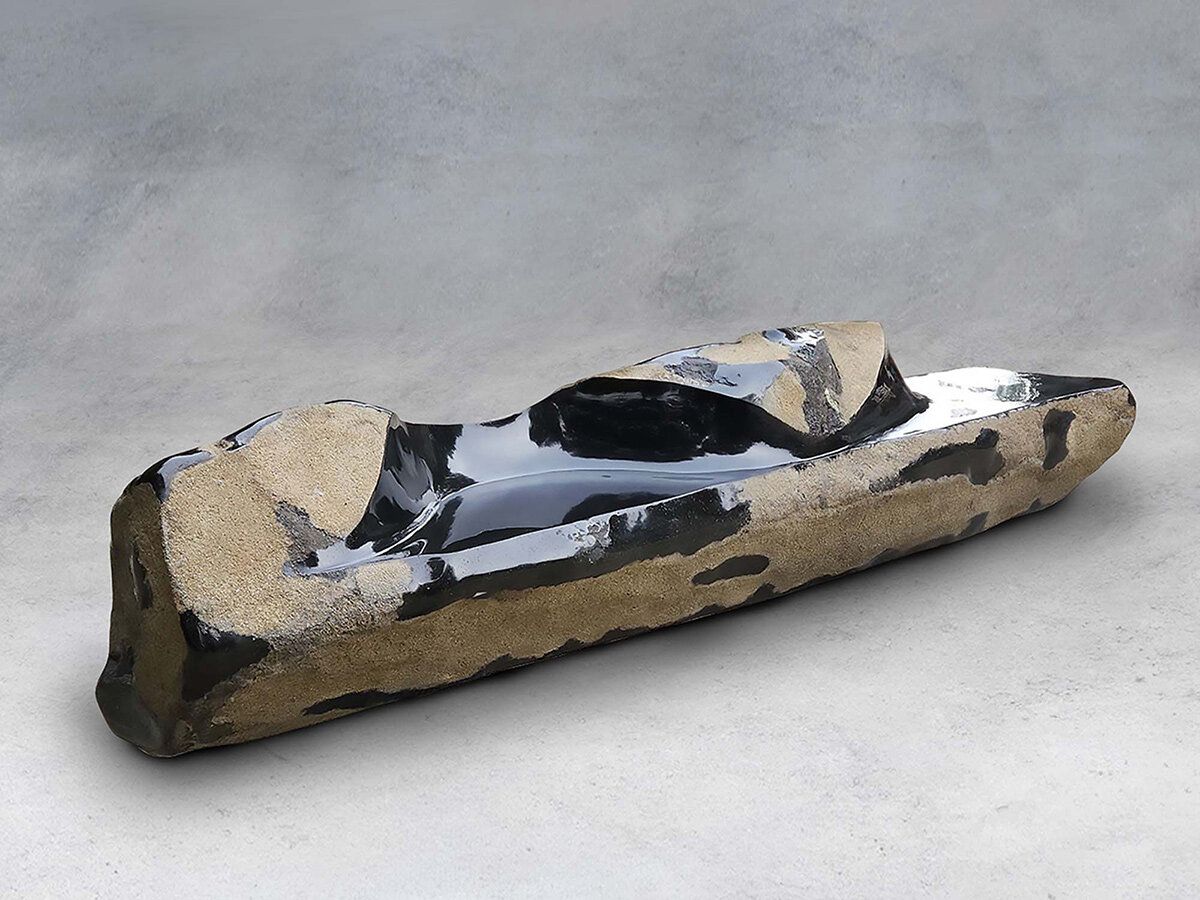
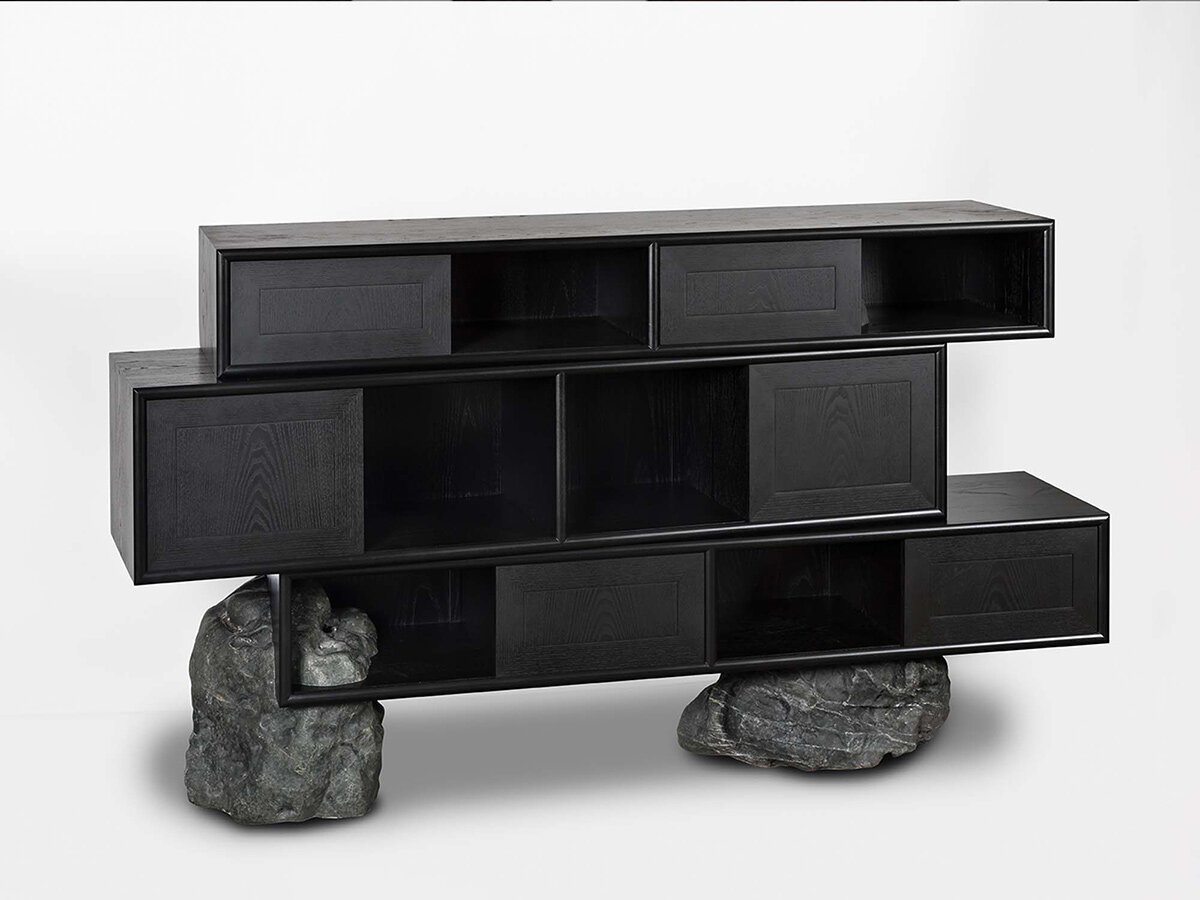
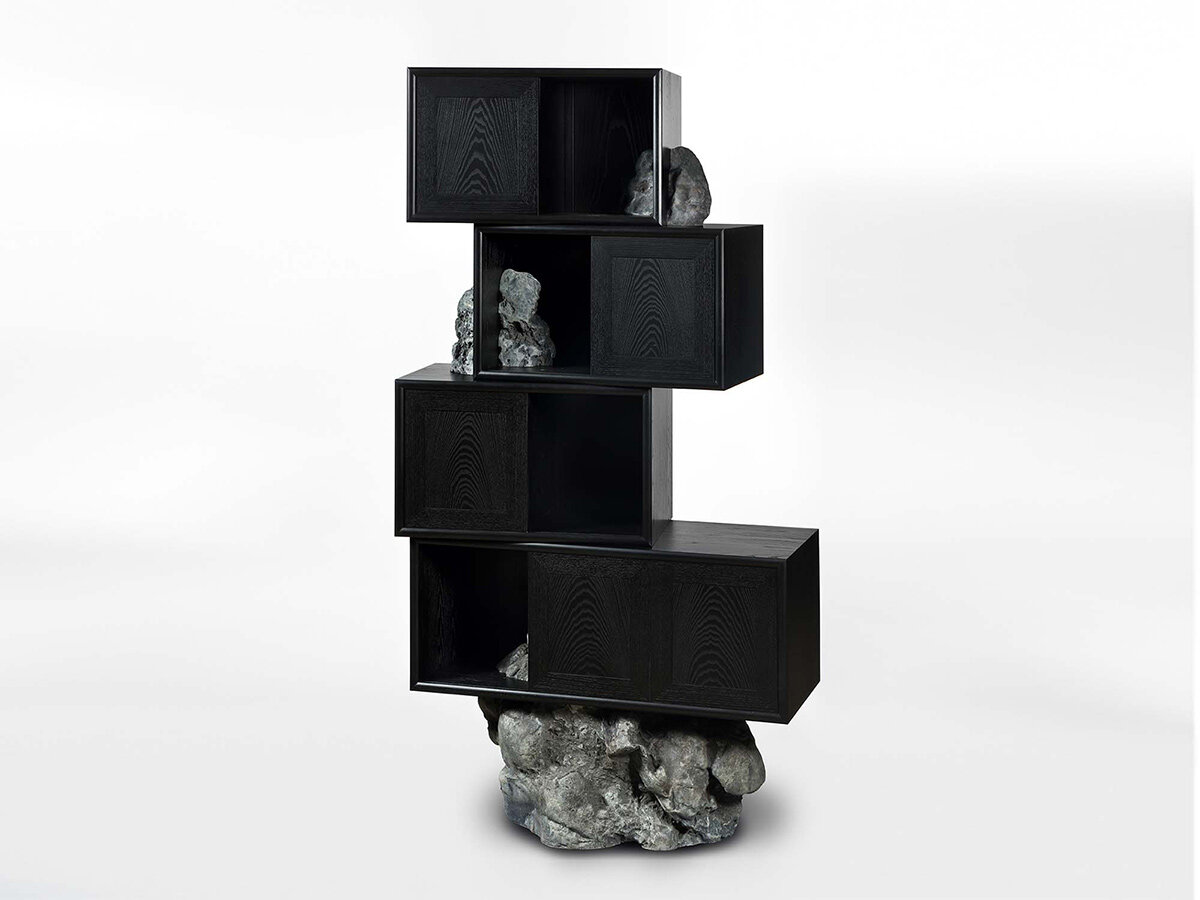
project info:
exhibition title: Voice of Silence
artist: Byung Hoon Choi | @atelier_choi
gallery: Friedman Benda | @friedman_benda
location: 515 W 26th St 1st Floor, New York, NY
on view: March 27th — May 23rd, 2025
photography: © Izzy Leung | @izzyleung

